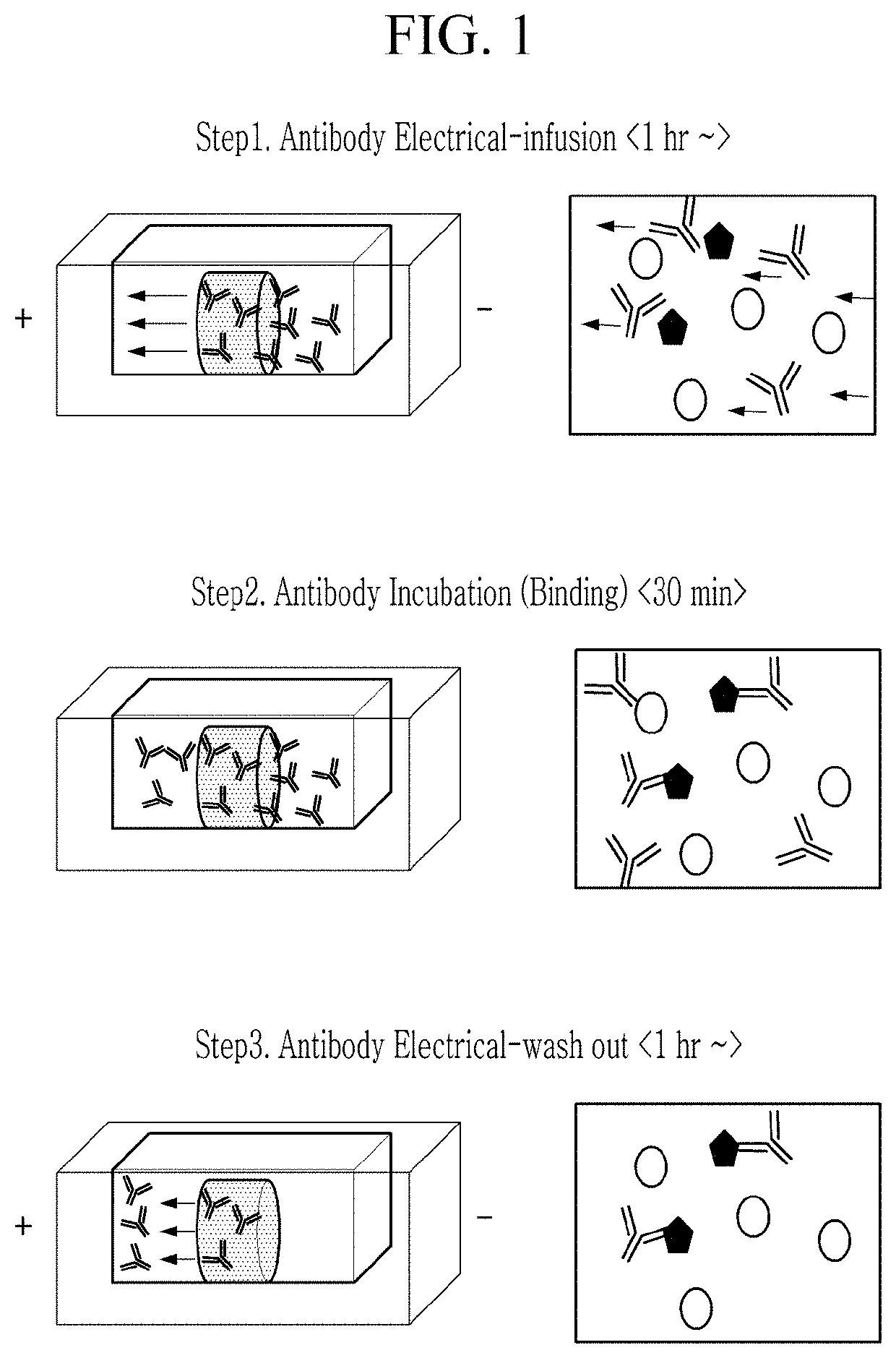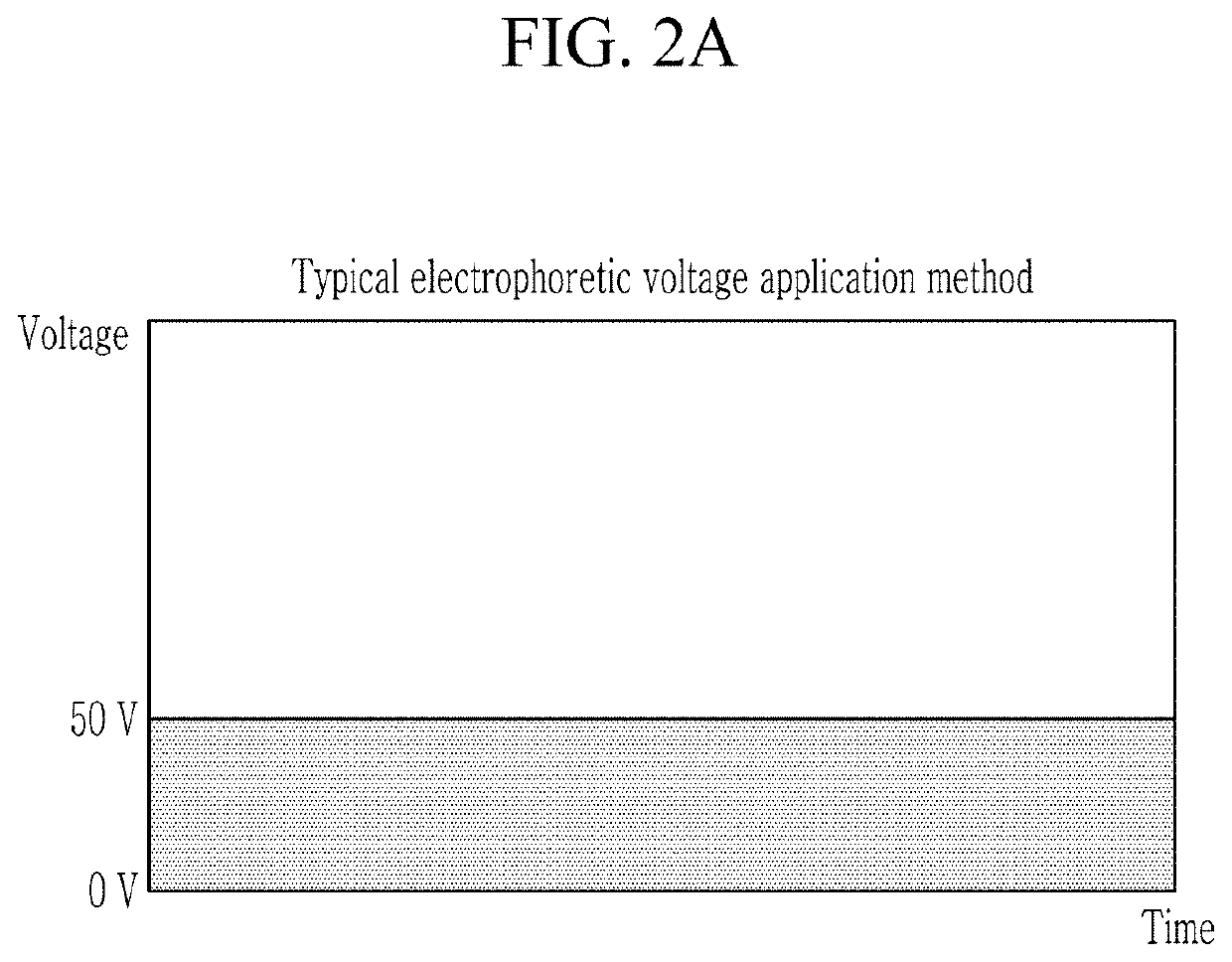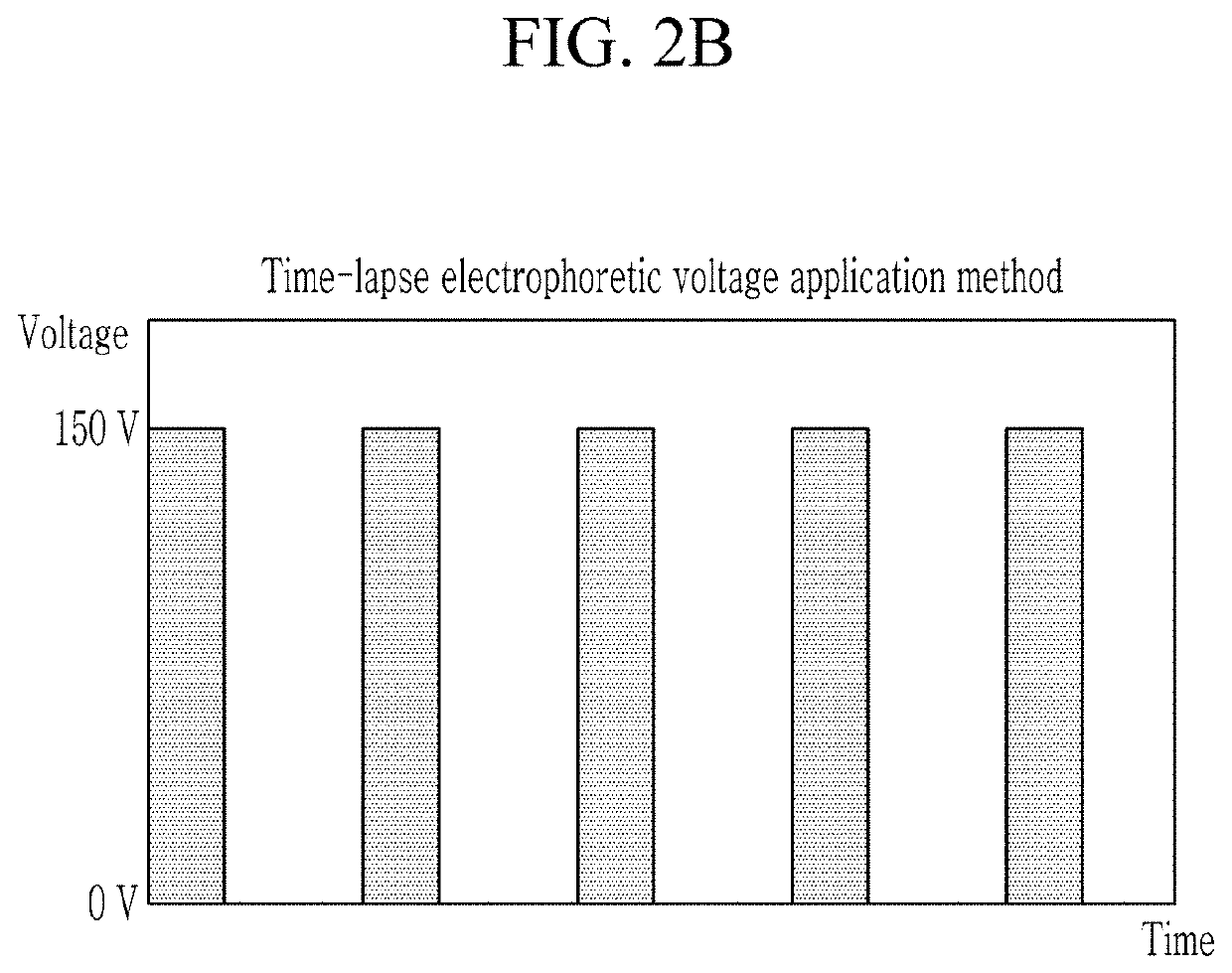Electrophoretic biological sample staining method and staining apparatus using
a biological sample and staining method technology, applied in the field of electrotrophoretic biological sample staining method and staining apparatus, can solve the problems of difficult image of the inner tissue of difficult to image the thick biological tissue sample, and inability to accurately measure the thickness of the cleared tissue, etc., to achieve accurate measurement, low electrical resistance, and high electrical efficiency
- Summary
- Abstract
- Description
- Claims
- Application Information
AI Technical Summary
Benefits of technology
Problems solved by technology
Method used
Image
Examples
example 1
on of Sample
[0139]A cleared brain tissue sample was prepared by a typical CLARITY method using the brain of an untransformed rat (SD Rat, 4-6 weeks old).
[0140]Through heart perfusion, blood was drained from the brain microvessels. The brain was excised from the rat, was immersed in a hydrogel monomer solution in which 4% (w / v) acrylamide, 0.25% (w / v) VA-044, and 4% (w / v) PFA (paraformaldehyde) was dissolved in a phosphate buffer saline (PBS) solution, and was incubated for 2 days at 4° C.
[0141]Then, the brain was placed in a vacuum state for 2 to 4 hours in the dark while raising a temperature to 37° C. by using a specially manufactured machine (CLARITY Easy-Imbedding, LCI).
[0142]Thereafter, after slicing it at a desired sample size (thickness: 500 μm, 1 mm, 1.5 mm. 2 mm, 5 mm; diameter: 5 mm, 10 mm), Electro-Tissue Clearing (ETC) was performed by using a CLARITY machine (CLAIRT Easy-Clearing, LCI). In this case, a buffer solution containing 4% of SDS, 50 mM of LiOH, and 25 mM of bo...
example 2
on of Biological Sample Staining Apparatus Using Electrophoretic Method of Staining Biological Sample with Ion Conductive Film Applied
[0144]The manufactured sample chamber was installed between respective electrode parts of a device including a power supply, both electrode parts (each electrode part includes a buffer inlet at a lower portion of one side and a buffer outlet at an upper portion of the opposite side), a buffer supply part (borate buffer; 50 mM of LiOH, 25 mM of boric acid) connected to a buffer inlet and a buffer outlet of the both electrode parts, and a cooler connected to the buffer supply part. The device includes a cooling water circulation channel that is disposed in full contact with two sides of the sample chamber except for two sides thereof in contact with the electrodes, a lower surface, and an upper surface, and that has an inner space through which cooling water may circulate, and a cooling water supplier connected to the cooling water circulation channel.
example 3
ining Test Through Electrophoresis Technique Using Ion Conductive Film (Primary Antibody and Secondary Antibody Test)—Glial Cell Staining
[0145]Immunostaining was performed on the CLARITY sample of the brain tissue of the untransformed rat (SD Rat, 4-6 weeks old) obtained in Example 1 by using a glial fibrillary acidic protein (GFAP) antibody through an electrophoresis technique using the ion conductive film, and then was imaged.
[0146]The brain tissue sample with the diameter of 10 mm and the thickness of 1 mm prepared in Example 1 was inserted into the holder body of the sample chamber in the device prepared in Example 2, and was inserted into the biological sample fixing part to be fixed, and then each space of the electrode part and the sample chamber was filled with a borate buffer (50 mM of LiOH, 25 mM of boric acid). An antibody (1st Antibody, Abcam, UK) targeting GFAP, which is a glia cell marker of the brain, in the immunostaining reagent part (antibody supply part), which is...
PUM
| Property | Measurement | Unit |
|---|---|---|
| current | aaaaa | aaaaa |
| thickness | aaaaa | aaaaa |
| thickness | aaaaa | aaaaa |
Abstract
Description
Claims
Application Information
 Login to View More
Login to View More - R&D
- Intellectual Property
- Life Sciences
- Materials
- Tech Scout
- Unparalleled Data Quality
- Higher Quality Content
- 60% Fewer Hallucinations
Browse by: Latest US Patents, China's latest patents, Technical Efficacy Thesaurus, Application Domain, Technology Topic, Popular Technical Reports.
© 2025 PatSnap. All rights reserved.Legal|Privacy policy|Modern Slavery Act Transparency Statement|Sitemap|About US| Contact US: help@patsnap.com



